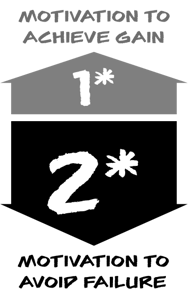4 things you need to know about B2B buying decisions
August 2, 2017

 If you think it’s hard to sell, you might want to spare a thought for your potential customers: depending on which research you look at, the majority (around 2-in-3) of their buying decision processes end with them deciding to do nothing at all, and sticking with the status quo.
If you think it’s hard to sell, you might want to spare a thought for your potential customers: depending on which research you look at, the majority (around 2-in-3) of their buying decision processes end with them deciding to do nothing at all, and sticking with the status quo.
There is, of course, a connection between our challenges as sales people and our prospective customers’ challenges in reaching a consensus about whether they really need to change and, if so, what they need to change to and which solution represents their best available option.
If you’re determined to do a better job of assessing and influencing your prospect’s intentions, here are 4 key things you need to know about how buying decisions are actually made…
1: Status Quo Bias
According to research into buying behaviours by the Nobel-prize winning behavioural economist and psychologist Daniel Kahneman and referred to in a range of publications including the “Three Value Conversations”, if your customers lack a compelling reason to change, they are likely to decide to stick with the status quo.
This is closely connected with a concept that I introduced in an earlier article: the pyramid of pain. Whilst interesting needs may to set off an investigation, and whilst important needs are likely to trigger a detailed investigation, only truly critical needs are guaranteed to force an organisation into action.
The implication for sales: if, as I do, you see sales as fundamentally an exercise in change management, then we must carefully assess whether our customer’s current pains are so significant that they outweigh the risks that are always associated with any new initiative.
If they are not currently significant enough to drive action, then we need to see whether we can amplify the pain by introducing previously unconsidered implications that make action inevitable. Our goal must be to get the prospect to the point where they believe that the pain of same significantly outweighs the pain of change.
2: Loss Aversion
On a closely related topic, Kahneman also discovered through a series of cleverly designed experiments that people (and by extension the organisations they work for) are twice as strongly motivated by the drive to avoid a loss as they are by the opportunity to achieve a gain.
In other words, the fear of failure is much more powerful in these circumstances than the hope of success. This finding, in particular, challenges conventional sales behaviours that typically seem focused on promoting a positive vision of the future rather than helping the customer to see the risks in where they are today.
The implication for sales: we’ve got to get used to spending much more time deeply diagnosing and exploring our customer’s current situation and developing the consequences and risks of inaction before we give in to the temptation to promote our solution and the benefits it could bring to the customer.
If we can then connect the negative consequences of sticking with the status quo with the positive benefits of adopting our solution, and if we help them to build the case for change, we will find ourselves in a much better situation than we would if we give in to the “itch to pitch” at the first possible opportunity.
3: More decision-makers = fewer decisions
Many observers have acknowledged the growing trend towards consensus-led buying strategies that inevitably involve many more stakeholders. The authors of “The Challenger Customer” now estimate that there are, on average, 6.8 actively involved members of the decision team in a typical complex B2B purchase.
More worryingly from the sales person’s perspective, their research has also shown that the probability of a successful outcome to the buying process drops from around 80% when a single decision maker is involved to around 30% when there are six or more members of the decision team.
The implication for sales: If fewer than 1-in-3 typical complex buying decision processes result in a clear decision to buy anything, then we clearly need to do a better job of helping to facilitate the customer’s buying decision process and playing our part in identifying and eliminating the many obstacles that could lie in the way.
It is foolishly dangerous to assume that our customers know how to buy, and it is critically important that we work through and with a pro-active change agent (the authors of the Challenger Customer use the term Mobiliser®) on the customer’s side who is capable of steering the internal buying process to a successful conclusion.
4: No differentiation = safest choice
“Me-too” marketing and “thought leadership” materials that are nothing of the sort aren’t helping the cause, either: if prospects cannot differentiate between their solution options in a meaningful way, they will default to the safest choice - which, if it isn’t “do nothing”, is likely to be either the lowest cost offer or most recognisable brand.
If we are neither the lowest cost option nor the most established brand in the space (and, let’s face it, most times we won’t be either), then we had better make sure that we are seen to be clearly and positively differentiated from all the other options available to the customer.
Traditional “value added strategies” usually turn out to be counter-productive. Having additional features or capabilities that the customer does not recognise they really need will only open the suspicion that we must be over-charging and spark a request that we discount the irrelevant features and give them a keener price.
The implications for sales: we have to move the discussion away from the obvious needs that everyone else is addressing and shift the conversation towards previously unrecognised and yet inherently critical implications that are uniquely well-addressed by our distinctive capabilities. Or we had better brace ourselves for a price negotiation that can only end in a race to the bottom.
Understanding Buying Behaviour
It ought to be clear that the more we understand how our customers buy and what drives their buying behaviour, the more effective we will be as sales people. If you’re interested in exploring the implications in greater detail, I recommend the two excellent books that I referred to above: “The Challenger Customer” and the “Three Value Conversations”.
ABOUT THE AUTHOR
 Bob Apollo is a Fellow of the Association of Professional Sales and the founder of UK-based Inflexion-Point Strategy Partners, home of the Value Selling System®. Following a successful career spanning start-ups, scale-ups and corporates, Bob now works with a growing client base of tech-based B2B-focused high-growth businesses, enabling them to systematically establish their distinctive business value in every customer interaction.
Bob Apollo is a Fellow of the Association of Professional Sales and the founder of UK-based Inflexion-Point Strategy Partners, home of the Value Selling System®. Following a successful career spanning start-ups, scale-ups and corporates, Bob now works with a growing client base of tech-based B2B-focused high-growth businesses, enabling them to systematically establish their distinctive business value in every customer interaction.


Comments